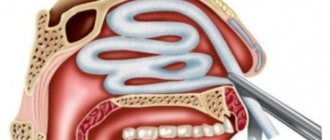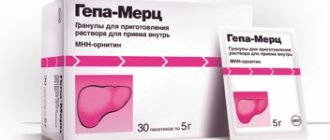A zoonosis is an infectious disease transmitted to humans from non-human animals. Zoonotic pathogens can be bacteria, viruses or parasites, as well as non-traditional pathogens that can be transmitted to humans through direct contact or through food, water or the environment. Given our close ties to farmed, domestic and wild animals, zoonotic diseases represent a major health problem worldwide. They may also disrupt the production of animal products for human consumption and other uses and the trade in such products.
Zoonoses account for a significant proportion of all newly identified and many existing infectious diseases. Some diseases, such as HIV infection, begin as a zoonosis, but later strains mutate and only affect humans. Other zoonoses can cause periodic disease outbreaks, such as Ebola virus disease and salmonellosis. Others, such as the novel coronavirus that causes COVID-19, have the potential to lead to global pandemics.
Unpleasant surprises from nature
Many of us truly love animals. We perceive our pets as family members, often not really thinking about our own safety. But the idyll can be destroyed if minimal precautions are not taken. It is naive to believe that the tailed inhabitants of our apartments are one hundred percent protected from all kinds of diseases. They are by no means isolated from the environment. Even after an ordinary walk, they can bring some kind of “sore” into the house, which can cause a lot of trouble not only for the pet, but also for you and your household. And if you are going out of town, remember that only vaccinated animals can be taken out into the wild, otherwise, when faced with their wild counterparts, our pets can become a source of disease for us.
Speckled skin
Microsporia or ringworm is one of the most common skin diseases of animals. When people become infected from them, people also get sick: small spots appear on the skin, covered with gray scales; there can be from two to a hundred of them on the human body. The causative agent of microsporia also affects the hair, so sometimes during treatment the head has to be shaved, which is very unpleasant for the patient. If you notice even a slight redness in the shape of a circle or ring, do not be lazy - go to a dermatologist. If time is lost, curing the disease will be much more difficult.
Salvation is a vaccine
Of course, sanitary measures and personal hygiene play a huge role in the prevention of brucellosis. But this is not enough when there is a real threat of contact with a sick animal and infection. In such cases, vaccination is needed.
“For immunization against brucellosis caused by the most common type of Brucella - goat-sheep - live (attenuated) vaccines are used. They contain artificially weakened brucellae, which cannot provoke the disease, but cause an immune response. – explains Microgen expert Alexander Sergeev. – A person is vaccinated once: the solution is injected subcutaneously with a syringe or dripped onto the skin, scarifying it with a special instrument - a scarifier. If necessary, revaccination is carried out a year later - a smaller dose is used for it.”
The vaccine against brucellosis is produced at the branch of NPO Microgen in Omsk - the enterprise fully supplies the country with the drug. Although brucellosis is a rare disease, it is important for everyone to know about it, especially those who are at high risk of contracting the causative agent of this disease.
"Dogs can be biting..."
The main “reservoir” of the rabies virus is dogs, cats, wild animals, especially foxes. A sick animal behaves unusually: a domestic pet can become aggressive and refuse water and food, and vice versa, a wild animal is not afraid of people and comes out to them. To prevent rabies, pets must be vaccinated. Infection of a person occurs when a sick animal bites or its saliva gets on the mucous membranes and damaged skin, so if you are bitten by a dog or any other animal, the first thing you need to do is wash the wound with plenty of soap and water. There is no need to bandage or clamp the wound - the flowing blood will wash it away from the animal's saliva. But if a large blood vessel is bitten, this method is not applicable. And most importantly, if you are bitten by an animal, immediately consult a doctor at the emergency room at your place of residence! You can forget about the painful forty injections in the stomach - the new generation vaccines are injected into the shoulder and only six times. It should be remembered that rabies is a fatal disease, but timely vaccination actually prevents its development.
Three out of four
The main and most dangerous carriers of zoonoses, according to the international organization EcoHealth Alliance, are bats, primates and rodents. Pets can also be a source of infection, especially if they are not vaccinated. Transmission to humans occurs in the same ways as among animals: through the air, by eating the meat of infected individuals, through an insect bite.
The most dangerous infections of a zoonotic nature are considered to be the Zika and Ebola viruses, bird and swine flu, and others. Avian and swine influenza viruses arose through reassortment with human influenza virus strains and have caused pandemics in the past. The most notorious and deadly of them was the Spanish Flu of 1918-1920, which, according to various estimates, claimed from 50 to 100 million lives. The recent 2009 pandemic was also caused by gene exchange between human, swine and avian influenza virus strains. The current deadly coronavirus has been declared an international emergency by the WHO.
Scientists are unanimous in their opinion: outbreaks of new diseases not yet known to man will come to us in a similar way. Their causative agents will be viruses and bacteria that are initially found in animals. Unfortunately, epidemiological statistics leave no other options: three out of four new infections turn out to be zoonotic.
Bats are among the main carriers of zoonotic diseases / ©www.blackpantera.ru
The good news, however, is that today a significant number of zoonoses we know have been brought under control. Disease outbreaks that have caused deadly pandemics in the recent past have been stopped thanks to vaccination. Humanity has learned to fight back against germs by studying the principles of how the immune system works. Currently, there are scientific centers around the world to identify new infections in animals that may threaten human health. Programs are also being implemented to prepare for the prevention of possible outbreaks of diseases, where immunoprophylaxis plays a significant role.
Dangerous water
Leptospirosis is an acute infectious disease that affects both people and animals. Outbreaks of leptospirosis occur mainly in the summer. The main way leptospirosis spreads is through water. When traveling out of town, try to avoid staying near livestock farms or pastures. The cause of the disease can be the consumption of water from open sources, since animals that carry leptospirosis can introduce leptospira into the water along with saliva and urine. Small forest lakes and ponds with stagnant water, which are often natural foci of leptospirosis, are not suitable for washing and swimming. The causative agent of the disease can enter the human body through damaged skin and mucous membranes. The digestive tract can also be the “gate of entry” for infection. If, despite all precautions, you have chills, a sharp rise in temperature, headaches and muscle pain, or inflamed eyes, you should immediately consult a doctor.
Difficult to find and defeat
Brucellosis is considered a particularly dangerous infection, and that says it all. It is easy to become infected, treatment is long, there is a risk of serious complications, including those leading to disability, and in some cases death is possible. First, Brucella penetrates the lymph nodes, then spreads through the blood throughout the body and affects various organs. The immune system responds violently to the invasion of strangers, which is why brucellosis is considered an infectious-allergic disease. It usually takes 1–6 weeks (incubation period) before the first symptoms appear. The disease usually occurs in one of three forms: acute, subacute (recurrent) or chronic.
In the acute form, the temperature rises significantly - up to 39 degrees, chills, sweating occur, pain in muscles and bones occurs, general health worsens, and appetite disappears. With subacute brucellosis, periods of fever and deterioration of health alternate with periods of improvement. In chronic cases, the temperature is slightly elevated, the patient feels relatively well, and other symptoms depend on which organs are most affected.
The risk of getting sick is highest among rural residents / ©mtdata.ru
Moreover, the lesions are diverse and affect almost all human organ systems. With the advent of antibiotics, doctors began to fight brucellosis quite successfully, however, even today there is a possibility of fatal complications. If a person has been diagnosed with brucellosis, he will have to suffer for a long time. In the acute form, recovery will most likely be possible only after 2–6 months. Chronic disease can last for years; there are isolated cases where the disease could not be defeated for 25 years.
To effectively treat brucellosis, it must be diagnosed in time. And there are problems here. Due to nonspecific symptoms, not every doctor will immediately make the correct diagnosis. And people don’t always go to doctors, in the hope that “it will go away on its own.” As a result, not all cases of the disease are detected, and no one can say with absolute certainty how often it occurs: official statistics show underestimated figures. For Russia this is 400–500 cases per year. The diagnosis is confirmed by serological tests (test for bacterial antigens) and an allergic skin test.
Caution – toxoplasmosis!
Humans can be infected with toxoplasmosis by dogs, cats, rabbits, as well as ornamental, singing and farm birds. In animals, the pathogen is excreted in feces and urine, and mucus from the nose. People become infected mainly through contaminated foods. Once in the human body, the pathogen spreads through the bloodstream, affecting the brain, eyes, spleen, liver, and lymph nodes. Acute toxoplasmosis is usually accompanied by fever, headache and muscle pain. Chronic can last for years and is expressed in low-grade fever, irritability, decreased visual acuity, memory and performance. Prevention of the disease consists of identifying and treating sick animals, which must be periodically examined. The most important measure is washing hands after contact with animals, as well as heat treatment of meat and dairy products.
WHO activities
WHO works with national governments, academic institutions, nongovernmental and philanthropic organizations, and regional and international partners to prevent and respond to zoonotic disease threats and their health, social and economic impacts. These efforts include strengthening collaboration at the human-animal-environment interface between various relevant sectors at the regional, national and international levels. WHO also works to build capacity and promote evidence-based and cost-effective practical tools and mechanisms for the prevention, surveillance and detection of zoonotic diseases through reporting, epidemiological and laboratory research, risk assessment and control, and assist countries in their implementation.
As part of the One Health approach, the World Health Organization is collaborating with the Food and Agriculture Organization of the United Nations (FAO) and the World Organization for Animal Health (OIE) to develop the Global Early Warning System for Major Animal Diseases (GEDS). This joint system builds on the added value of integrating and coordinating the alert mechanisms of the three agencies to facilitate early warning of, prevention and response to animal disease threats, including zoonoses, through data sharing and risk assessment.
Disease on bird rights
Indoor birds (budgies, canaries and other small songbirds) can be a source of infection with psittacosis (pneumochlamydia). People who usually have constant contact with birds get it. When infected at home, family outbreaks can occur. Infection occurs by airborne droplets - when particles of bird feces are inhaled with dust while cleaning cages. The disease usually occurs 5–10 days after an infected bird appears in the house. If your feathered pet has been living with you for several months, then most likely it is healthy and infection is unlikely (if during this time there has been no contact with other birds). A sick person develops chills, headache and muscle pain, an increase in body temperature to 38-40 degrees, a dry cough and sore throat. On the fifth to seventh day, chest pain, shortness of breath, cough with bloody mucous sputum, and signs of pneumonia appear. A person suffers from insomnia and dizziness. If you do not consult a doctor in time, subsequent relapses and the disease may become chronic. The danger of the disease should not be underestimated, therefore, when the first signs of illness appear, you should immediately see a doctor.
Zoonoses
Zoonoses are foodborne infectious diseases that are transmitted to humans from sick animals through meat and milk. These diseases include brucellosis, tuberculosis, anthrax, foot and mouth disease, etc.
Brucellosis is a serious infectious disease accompanied by attacks of fever, swelling, and pain in the joints and muscles. The incubation period is 4-20 days. The duration of the disease is from several weeks to several months. The causative agent is Brucella - a bacterium in the form of a small rod, with an optimal development temperature of 37C, which dies during heat treatment. Human infection occurs through milk, dairy products (cheese, feta cheese, butter) and meat, in which Brucella survives for 8-60 days.
Tuberculosis is an infectious disease that most often affects the lungs and lymph glands. Humans become infected from sick animals, birds and people. The causative agent of the disease is the tuberculosis bacillus (Koch bacillus), resistant to drying and freezing, persisting on food products for up to 2 months. It dies when boiled for 10 seconds. The infection enters the body of a healthy person with raw milk and dairy products, as well as with poorly cooked or fried meat obtained from animals with tuberculosis. Infection is transmitted from a sick person through airborne droplets or contact.
Anthrax is an acute, especially dangerous infectious disease of animals and humans that affects the skin, lungs, or intestines. With this disease, all body functions are disrupted, the temperature rises to 40C, cardiac weakness occurs, and in the intestinal form, vomiting and diarrhea appear. Deaths are common. The causative agent of anthrax is a bacillus whose spores are very resistant to environmental influences and chemicals. The infection is transmitted through the meat and milk of sick animals and through direct contact with them and animal products (wool, leather, etc.). The main role in the prevention of this terrible disease belongs to strict veterinary control of animals. Meat from sick animals cannot be processed.
Foot and mouth disease is a contagious disease of viral origin, transmitted to humans from sick animals through meat and milk. This disease manifests itself in humans in the form of inflammation and ulceration of the oral mucosa. The foot-and-mouth disease virus is not resistant to heat treatment and weak organic acids; it dies when meat is cooked.
Measures to prevent zoonotic diseases in public catering establishments are as follows:
1. Checking the presence of a mark on meat carcasses, indicating a veterinary and sanitary inspection of raw materials.
2. Thorough frying and boiling of meat dishes.
3. Boiling milk, using curdled milk only for preparing dough, and not pasteurized cottage cheese for cooking dishes subject to heat treatment.
Food poisoning
Food poisoning
are acute diseases that arise from eating food containing substances of a microbial or non-microbial nature that are toxic to the body. Unlike intestinal infections, food poisoning lasts several days, but in some cases it becomes very severe and can be fatal. Children, elderly people and people suffering from gastrointestinal diseases are especially sensitive to food poisoning.
Most poisonings have similar symptoms of the disease: abdominal pain, nausea, vomiting, fever, diarrhea, dizziness. Such patients urgently need to call a doctor and provide first aid to rid the body of poisons. The patient should rinse the stomach with 3–5 glasses of clean water or a weak solution of potassium permanganate solution, or a solution of soda and induce artificial vomiting.
Food poisoning, depending on the cause of the disease, can be of microbial or non-microbial origin.
Food poisoning of bacterial origin
Food poisoning of bacterial origin occurs from eating food containing living microbes or their poisons. Bacterial poisoning accounts for up to 90% of all food poisoning cases. They mainly occur in the summer, since the warm season contributes to the rapid proliferation of microbes in food.
Poisoning caused by living bacteria that enter the body with food is called foodborne toxic infections. This group of poisonings includes salmonellosis and poisoning by opportunistic pathogens. The peculiarity of these diseases is that the formation of poison (toxin) occurs in the human body, where microbes enter along with food. Poisoning caused by poisons accumulated in food during the life of bacteria is called bacterial toxicosis. These include botulism and staphylococcal poisoning.
Salmonellosis is a disease caused by microbes - salmonella, which occurs 3 - 5 hours after eating food contaminated with bacteria. In the intestine, Salmonella causes inflammation of the intestinal mucosa. When bacteria die, a toxin is released, which, together with living microbes, is absorbed into the blood. The patient experiences nausea, vomiting, abdominal pain, diarrhea, headache, dizziness, high temperature (38-390C). The disease lasts 2-7 days. The mortality rate for salmonellosis is 1%. After recovery, cases of bacterial carriage are possible.
Salmonella are short, mobile rods that do not form spores, conditional anaerobes, named after the scientist Salmon, who discovered them. Their development optimum is 370C, they develop well at room temperature, stop development at 40C, die at 70 - 750C for 30 minutes, in the external environment of a rack.
The source of salmonella spread is animals: large and small cattle, pigs, horses, poultry, especially waterfowl, dogs, rodents. With the feces of these animals, salmonella enters the soil and water.
The reasons for food contamination with Salmonella vary. Catering establishments may receive products contaminated with salmonella (primary contamination). Such products include meat, poultry, eggs, milk, fish. Most often, salmonellosis is caused by meat and meat products. Charging of meat can occur during the life of the animal (during exhaustion, fatigue). When such animals are forced to be slaughtered, the meat always turns out to be contaminated with salmonella. Contamination of meat is possible both during slaughter and during cutting of carcasses through contamination with intestinal contents.
Poultry, especially waterfowl (geese, ducks), become infected in the same way as livestock. Poultry eggs, especially goose and duck eggs, become infected during formation and laying, milk - during milking and processing. Fish become infected through bodies of water; Salmonella penetrates its muscle tissue from the intestines.
Salmonellosis can occur from secondary contamination of food in case of violation of sanitary rules for its preparation and storage. Secondary contamination of dishes prepared after heat treatment is most possible: jelly, jellied meat, minced meat for pancakes and pies, pates, salads, vinaigrettes. Violation of personal hygiene rules, flies, dirty tableware and kitchen utensils also contribute to the occurrence of salmonellosis.
To prevent salmonellosis you must:
1. Conduct examinations of cooks and confectioners for bacterial carriage at least once a year.
2. Strictly observe the rules of personal hygiene, paying special attention to the cleanliness of your hands.
3. Wash tableware and kitchen utensils thoroughly, and follow the markings on cutting boards.
4. Check for the presence of a mark on the meat, indicating that it has passed veterinary and sanitary control.
5. Quickly carry out the process of preparing chopped semi-finished products, including cutlet mass, thereby preventing the proliferation of salmonella.
6. Thoroughly boil and fry meat and fish dishes.
7. Carry out secondary heat treatment of perishable meat dishes (jelly, aspic, pates) during their preparation.
8. Carry out mechanical culinary processing of fresh fish according to operations, preventing its contamination with intestinal contents.
9. Use waterfowl eggs only for the baking industry.
10. Boil milk, use yogurt only in dough.
11. Protect salads, vinaigrettes and other cold dishes from contamination with your hands during their preparation.
12. Store all prepared food for no more than the established period at a temperature of 2-60C or hot at a temperature not lower than 650C.
Poisoning by opportunistic microbes occurs when large amounts of E. coli or the microbe Proteus enter the human body with food. Poisoning occurs like Salmonella toxic infection, but is less severe. Escherichia coli and Proteus live in the gastrointestinal tract of humans and animals and are widespread in nature. Food poisoning occurs only when food is heavily contaminated with these microbes. When food is slightly contaminated, poisoning does not occur, which is why these microbes are called opportunistic.
E. coli gets into food products when personal hygiene rules are violated, especially from the cook’s dirty hands, when sanitary rules for preparing and storing food are violated, or when workplaces, workshops, and kitchen equipment are kept unsanitary.
The amount of E. coli found during a sanitary examination of equipment, utensils, utensils, the hands of the cook, confectioner and food serves as an indicator of the sanitary condition of the catering establishment.
Measures to prevent toxic infections caused by E. coli and Proteus are as follows:
1. Elimination of the causes of food contamination by microbes.
2.Preventing the proliferation of microbes.
3. Thorough heat treatment of food products.
4.Proper food storage
Botulism is poisoning from food containing the potent poison of the microbe - botulinus. Poisoning occurs within 24 hours after ingesting contaminated food.
The main signs of the disease are double vision, decreased clarity of vision (a feeling of fog, a grid before the eyes), headache, and unsteady gait. Then loss of voice, paralysis of the eyelids, involuntary movement of the eyeballs, tension of the masticatory muscles, paralysis of the soft palate, and difficulty swallowing may occur. Without timely treatment, death from respiratory distress may occur. In the absence of treatment with a special serum, the fatal outcome of the disease reaches 70%.
Botulinus is a spore-bearing, long rod (bacillus), mobile, anaerobic, not resistant to heat, dies at 80ºC for 15 minutes. Under unfavorable conditions, Botulinus forms very persistent spores that can withstand heating up to 100ºC for 5 hours, delay their development in an acidic environment, and die at 120ºC for 20 minutes (sterilization). Once in food products, spores under favorable conditions germinate into a vegetative cell (botulinus bacillus), which releases a toxin - a strong poison - within 24 hours at a temperature of 15 to 37ºC and the absence of air. Its lethal dose for humans is considered to be 0.035 mg. The development of botulinus is accompanied by the formation of carbon dioxide and hydrogen, as evidenced by swollen lids of cans (bombing). The toxin is formed in the deep layers of the product, basically without changing its quality; only a slight smell of rancid oil is noted. The toxin is destroyed throughout the entire depth of the product when heated to 100ºC for 1 hour. Botulinus is found naturally in soil, sea silt, water, and is found in the intestines of fish and animals.
If sanitary rules for preparation and storage are violated, food may become contaminated with botulinus. Basically, botulism is caused by various canned foods, especially homemade ones, due to their insufficient sterilization; ham, ham, sausages due to improper storage; fish, especially sturgeon, as a result of violations of the rules of catching, cutting and storing it.
To prevent botulism in public catering establishments it is necessary:
1. Check all canned food for bombing and store them in a refrigerator; At home, avoid preparing canned mushrooms in jars, as they are contaminated with botulinus spores.
2. Take fresh sturgeon fish only in frozen form; speed up the processing process.
3. Store ham, hams, sausages at a temperature of 2-6ºС, strictly observe the deadlines for sale.
4. Observe the rules of sanitary conditions and thorough heat treatment during the cooking process.
5. Observe the conditions, terms of storage and sale of prepared food.
Staphylococcal poisoning is an acute disease that occurs as a result of eating food containing staphylococcal toxin. The disease occurs 2-4 hours after eating poison-contaminated food and is accompanied by cutting pain in the abdomen, repeated profuse vomiting, general weakness, headache, dizziness at normal body temperature. Poisoning lasts 1-3 days. There are no deaths. The causative agent of poisoning is Staphylococcus aureus, which forms colonies in the form of bunches of golden grapes, is immobile, and dies at 700C for 30 minutes. When exposed to various food products, especially those with high humidity and containing starch and sugar, staphylococcus multiplies and secretes poison at temperatures from 15 to 370C, both in the presence of air and without it. At the same time, the quality of the product does not change. The poison (enterotoxin) is neutralized by boiling at 1000C for 1.5 - 2 hours. Staphylococcus aureus is widespread in nature. There is especially a lot of it on festering wounds of humans and animals.
To prevent staphylococcal poisoning it is necessary:
1. Systematically check cooks and confectioners for the presence of pustular skin diseases, sore throat and inflammation of the upper respiratory tract
2. Strictly observe the temperature regime for heat treatment of all dishes and products.
3. Store prepared food for no more than the specified period at a temperature of 2 - 6 0 C or hot at a temperature not lower than 650 C.
4. Be sure to boil milk and use unpasteurized cottage cheese for dishes.
5. Store confectionery products with cream at a temperature of 2 – 6 0C.
6. Store canned fish in oil at a temperature not exceeding 40C.
Mycotoxicoses.
Mycotoxicoses
– poisoning as a result of the ingestion of food contaminated by the poisons of microscopic fungi into the human body. Microtoxicosis occurs mainly from the consumption of charged products from grains and leguminous crops. Poisonings in this group include ergotism, fusarium, and aflotoxicosis.
Eroticism –
chronic food poisoning caused by ergot. This fungus parasitizes on ears of rye and wheat in the form of dark purple horns. When entering the body with bread and cereal dishes, ergot poison affects the nervous system and causes circulatory problems. To prevent ergotism, it is necessary to thoroughly clean ergot from food grains. According to GOST, its content in flour is allowed no more than 0.05%. At catering establishments it is necessary to sift and sort the grains.
Furaziotoxicoses –
arise as a result of consumption of grain products that have overwintered in the field or have become moist and moldy. Such grain is affected by microscopic fungi that release toxic substances. Poisoning with the poisons of this mushroom manifests itself in the form of a sore throat or in the form of a mental disorder - poisoning with “drunken bread”. A measure to prevent poisoning is strict adherence to grain storage rules.
Aflotoxicosis –
poisoning caused by the poisons of microscopic fungi when consuming peanuts and products made from wheat, rye, barley, rice that have become moist and moldy during storage. To prevent poisoning, it is necessary to comply with the storage conditions for flour, cereals, and peanuts.
Food poisoning of non-microbial origin
Poisonings in this group account for about 10% of the total number of poisonings. According to the classification, non-microbial poisoning is divided into: 1) poisoning with products that are poisonous by nature - mushrooms, raw beans; 2) poisoning with temporarily poisonous products - potatoes, fish during the spawning period; 3) poisoning with toxic impurities - zinc, lead, copper, arsenic.
Mushroom poisoning is mainly seasonal, because it is more often observed in spring and late summer when they are collected and consumed in large quantities. Toadstool, fly agaric, false honey mushrooms and a number of other mushrooms are poisonous. Consumption of toadstool is fatal in 90% of cases.
Poisoning by the kernels of stone fruits occurs due to the presence of amygdalin glucoside in them, which, when hydrolyzed in the human body, forms hydrocyanic acid. At public catering establishments it is prohibited to use the kernels of plums, peaches, apricots, cherries and bitter almonds in the production of confectionery products.
Raw bean poisoning o
is explained by the presence of phasin poison in it, which destroys during heat treatment. Poisoning most often occurs from consuming bean flour and concentrates. When preparing food from these products, special attention should be paid to heat treatment.
Poisoning by certain types of fish
(marinka, barbel, pufferfish) occur due to the fact that their eggs and milt are poisonous. At catering establishments, these types of fish must be gutted.
Sprouted potato poisoning
caused by the presence of solanine glucoside, contained in the eyes and skin of tubers. There is especially a lot of solanine in unripe, sprouted potatoes. In spring, heavily sprouted tubers should be boiled only peeled; their decoctions cannot be used.
Zinc poisoning
occurs when using galvanized utensils for cooking and storing food. According to sanitary rules, in catering establishments this utensil is used only for storing bulk products and water.
Lead poisoning
possible when using tinned and glazed ceramic dishes for cooking. According to sanitary standards, the lead content in dishes should not exceed 1%, and in the glaze of pottery - 12%.
Copper poisoning
occurs when using copper utensils, which are prohibited in public catering establishments.
Arsenic poisoning
observed when it gets into food products due to careless storage of arsenic preparations or when consuming vegetables and fruits. Measures to prevent this poisoning include thorough washing of vegetables and fruits.
Helminthic diseases
Helminthic diseases (helminthiasis) occur in humans as a result of damage to the body by worms (helminths), the eggs or larvae of which came from food prepared in violation of sanitary rules.
Worms are simple worms that parasitize various human organs and tissues. They come in different shapes (round, flat, ringed) and sizes (from a few millimeters to several meters). Small worms affect various human organs: liver, lungs, muscles, heart, brain, while large ones mainly parasitize the intestines. Helminthic diseases manifest themselves in humans in the form of weight loss, anemia, growth retardation, mental development in children, etc.
Worms go through three stages in their development - eggs, larvae and adult helminths. In most cases, the adult stage of development of worms occurs in the human body, and the larval stage in the body of animals or fish. A healthy person becomes infected from a patient who releases worm eggs into the external environment with feces. Worm eggs enter the body of animals or fish with food, turn into larvae, affecting various organs. Most often, humans are affected by the following worms: roundworms, tapeworms, trichinella, tapeworm, opisthorchis, echinococcus.
Roundworms –
roundworms 15-40 cm long, parasitic in the human intestine. A female roundworm releases up to 200 thousand eggs daily. Basically, a person becomes infected with roundworms through vegetables, fruits, berries, and water from open reservoirs.
Bovine and pork tapeworm (tape tape) –
flat tapeworms from 4 to 7 m long, consisting of segments and a head with suckers. The main host of these worms is a sick person, the intermediate host is cattle or pigs. Infection of a healthy person occurs through Finnish beef or pork meat.
Trichinella –
round microscopic worms, their main hosts are pigs, wild boars, with humans as an intermediate host. These worms cause a very serious disease in which human muscles are affected by Trichnella larvae.
Wide tapeworm
– a worm up to 10 m long, flat, parasitizing in the human intestines. Its intermediate host is fish.
Opisthorchis
(cat fluke) - helminths 1 cm long, parasitizes the liver and gall bladder of humans (or cats). The main host of these worms is humans, and the intermediate host is fish. The cause of human infection is fish dishes.
Echinococcus –
a tapeworm with a length of 1 cm. Its main hosts are dogs, wolves, foxes, in which the helminth is parasitic in the intestines. An intermediate host is a person in whose body the larva of echinococcus infects the brain, lungs, and liver.
To prevent helminthic diseases in public catering establishments it is necessary:
1. Check cooks and other workers for helminthic infestations at least once a year.
2. Observe the rules of personal hygiene of the cook, pastry chef, waiter, it is especially important to keep your hands clean.
3. Thoroughly wash vegetables, fruits, and berries eaten raw.
4. Boil water from open reservoirs when using it for food.
5. Check for marks on meat carcasses.
6. Thoroughly boil and fry meat and fish.
7. Maintain cleanliness in the workplace, in the workshop, destroy flies.
First, vaccinations...
If you notice any of the signs described above, do not rush to make a diagnosis yourself: even doctors never make a final verdict without the results of laboratory tests. It is better to immediately contact specialists, since it is always easier to get rid of any disease in the early stages. However, you need to be prepared for the fact that treatment can last from several weeks to months. In severe cases, hospitalization cannot be avoided. The best infection prevention is knowledge. Knowing that four-legged friends can be sources of very unpleasant diseases, it is wiser to prevent infection. If you pick up a dog or cat on the street, be sure to take it to the vet. He examines the animal for diseases, “illuminates” it with a fluorescent lamp to find out if there is microsporia, and gives the necessary vaccinations. Only then can you fearlessly introduce the foundling to your household. If the animal is sick, try to cure it; if the case is severe, it is better to euthanize - it will be more humane. But under no circumstances throw you out onto the street! After all, it becomes a source of infection for other people. And please practice good personal hygiene.
Who needs vaccination
“In Russia, measures to combat and prevent zoonoses are enshrined in law. In particular, immunization is carried out against tularemia, brucellosis, rabies, and Q fever. Such vaccinations are indicated for residents of areas recognized as disadvantaged by the epidemiological situation, specialists who, due to the nature of their work, face a high risk of infection, as well as those traveling to countries where there is a risk of infection,” says Doctor of Medical Sciences, Professor, Deputy Director of the Center for Development and Implementation NPO "Microgen" Alexander Sergeev.
Since zoonotic diseases most often affect residents of zones endemic for these diseases, large-scale vaccination of the population is not provided for within the framework of the National Preventive Vaccination Calendar. For this reason, not everyone knows about the need for prevention. Many people are either completely unaware of these infections or mistakenly believe that vaccinations are only given to animals. Meanwhile, technologies for the production of vaccines against many zoonotic infections were created by scientists back in the Soviet Union. Most of these drugs are today produced by NPO Microgen (part of the Nacimbio holding of the Rostec State Corporation).
“The company develops and produces original preventive drugs that have protected the health of citizens for more than a hundred years. Today we are a key player in the vaccine market and a center of competence in the creation of modern immunobiological drugs. Just last year we registered two new vaccines,” adds Alexander Sergeev.










